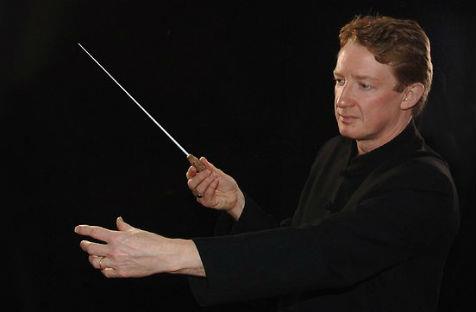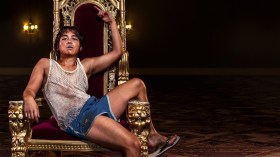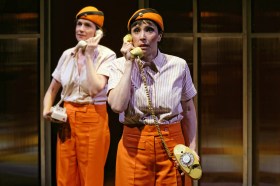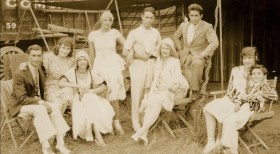In this concert, the Melbourne Symphony Orchestra presented the music of two great composers who do not make an obvious pair.
It resisted making a connection through the piano, although Schubert is perhaps best known for his music for this instrument. The effect was that it seemed we heard two concerts, each delightful but unrelated.
Also unusual was that the program began with the soloist alone. Simone Dinnerstein played Bach’s Chorale Prelude Ich ruf’ zu dir, Herr Jesu Christ (arr. Busoni) on a modern piano, beginning so softly and slowly that it took a minute to realise the work had begun. The effect was quite romantic in sound (as you might expect from Schubert rather than Bach!) and was definitely an arrangement for piano, not harpsichord.
While Dinnerstein’s musicality is beyond question, some notes sounded a little indistinct, with lower notes disproportionately loud at times. This appeared due to the instrument that was to prove quite soft throughout the performance.
Arrangements of Bach’s music for piano too often use pedal with forte dynamics to emulate the grandeur of his orchestral or organ works. Dinnerstein’s approach was a welcome contrast, and allowed for a gentle segue into Bach’s Keyboard Concerto in F minor. The orchestra was conducted by Douglas Boyd, well known to MSO audiences for his energetic conducting in the 2011 Beethoven Festival, and some recent appearances with the orchestra.
At first, the well-known opening movement of this concerto seemed to cry out for the sharper, bright sound of a harpsichord – although this is a matter of individual preference. Dinnerstein showed herself to be well across the technical demands of the work. Her touch was gentle but her fingers raced through the fast passages of the first and third movements. And the piano was heard to great advantage in the middle movement, its lilting pace gently supported by the MSO strings.
A slight change in the advertised running order saw the orchestra and Boyd remain with Dinnerstein for another Bach concerto, in D minor. This began decisively, although the pianist’s fluidity of touch at times allowed the strings to appear to be the “soloists”. Again, the second movement suited her almost reflective style, and Boyd wisely had the orchestra follow the piano in mood and dynamics.
The ending of the third movement was a model of synchronicity, with a strong and resonant ending. But it was impossible not to be won over by the delicate beauty of Dinnerstein’s solo performance of the Hess arrangement of Bach’s chorale prelude, Jesu, Joy of Man’s Desiring. While the melody moved from right to left hand, the accompanying chords were smoothly played and a full “soundscape” was created. Members of the orchestra sat entranced, and then joined in the enthusiastic applause that greeted Simone Dinnerstein’s performance.
After interval it was time for the Schubert, consisting of one work: his Symphony No.9 (Great). After an entry by a slightly blurred French horn, the winds took up the theme. There was a traditional Classicalstyle development of the theme, eventually drawing in the whole orchestra, (including a mellow tuba). The MSO revels in this kind of music, particularly when sympathetically led by a conductor of Boyd’s calibre: contrasts in dynamics, an almost “democratic” approach as each section plays its part, great crescendos in the latter part of the movement.
In the second movement the strings first set the “con moto” pattern, then winds introduced a theme for all to emulate and develop. Of all the music to this point, a beautiful cello-led passage was the most recognizably Schubert’s. However, the Scherzo that followed was instantly recognisable for its play of lightness and intensity, punctuated by the brass, and for the recurrent swaying waltz-like section.
More contrasts came with the final movement, Allegro vivace. The MSO performance was very dramatic and exciting (perhaps that earlier partnership with Boyd in the Beethoven festival stood the orchestra in good stead). The French horns signaled a move to a conclusion that was reminiscent of Beethoven in its use of contrasts, reprise, and final bursts of sound.
The program may have had two distinct parts, but they added up to a very satisfying whole. While the orchestra is commendably open to extending its repertoire, and introducing new or forgotten works to its loyal audiences, there will always be a place for a traditional concert like this.
Rating: 4 out of 5 stars
MSO: Bach and Schubert
Robert Blackwood Hall
Simone Dinnerstein piano
Douglas Boyd conductor
Bach Chorale Prelude Ich ruf’ zu dir, Herr Jesu Christ arr. Busoni
Bach Keyboard Concerto in F minor
Bach Chorale Prelude Jesu, Joy of Man’s Desiring arr. Hess
Bach Keyboard Concerto in D minor
Schubert Symphony No.9 Great





